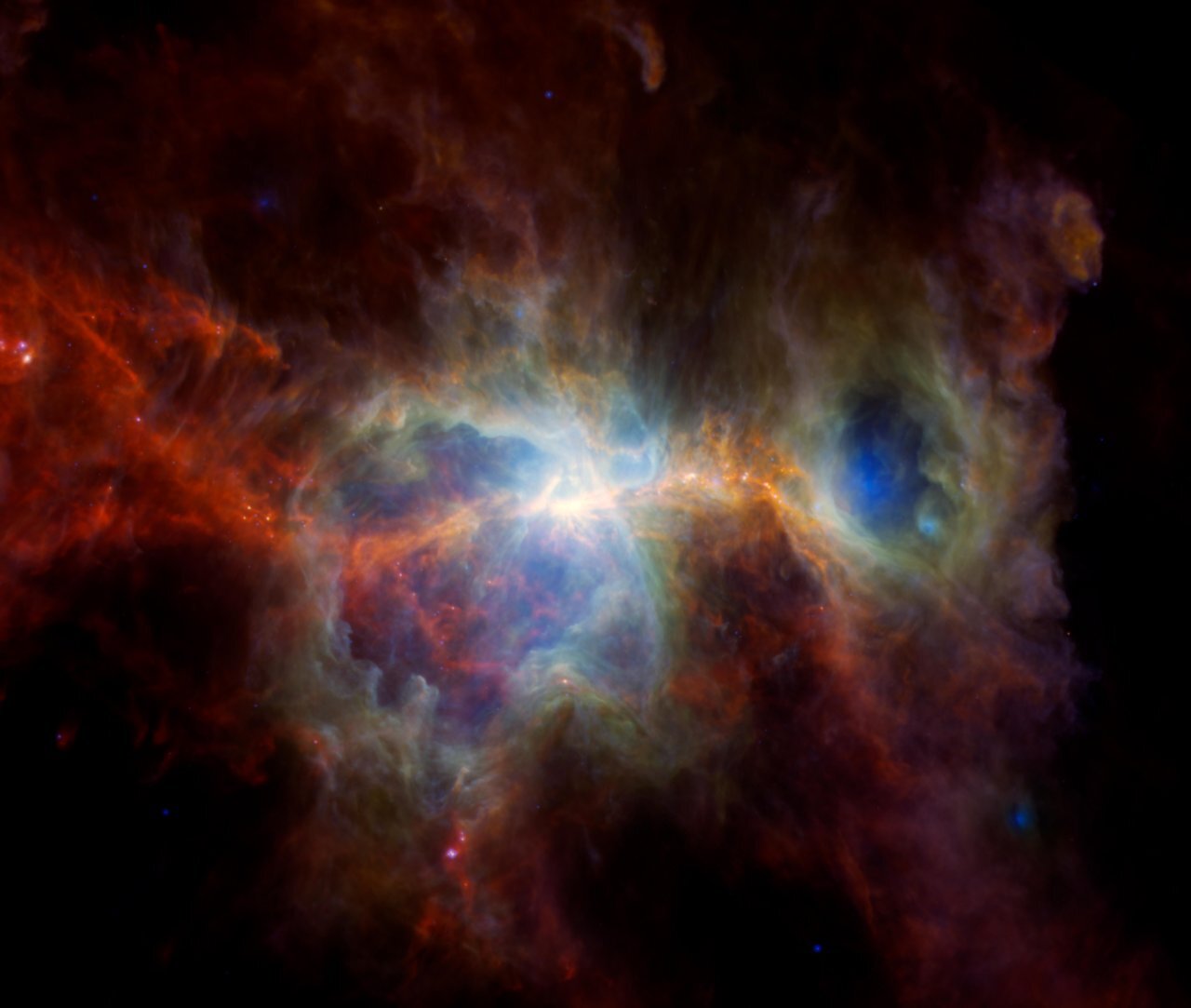1.12.2022

Space telescope images captured in infrared light reveal otherwise unseen details, as in this image of star-forming regions in the Orion Nebula. A recent study that relied on infrared data tracked frequent outbursts from baby stars as they gathered mass from surrounding disks of gas and dust.
Credit: ESA/NASA/JPL-Caltech
The youngest stars often shine in bright bursts as they consume material from surrounding disks.
Newborn stars “feed” at a furious rate and grow through surprisingly frequent feeding frenzies, a recent analysis of data from NASA’s retired Spitzer Space Telescope shows.
Outbursts from stellar babies at the earliest stage of development – when they’re about 100,000 years old, or the equivalent of a 7-hour-old infant – occur roughly every 400 years, the analysis found. These eruptions of luminosity are signs of feeding binges as the young, growing stars devour material from the disks of gas and dust that surround them.
“When you’re watching star formation, clouds of gas collapse to form a star,” said University of Toledo astronomer Tom Megeath. “It’s literally the process of star creation in real time.”
Megeath is a co-author of the study, which was published earlier this year in the Astrophysical Journal Letters and led by Wafa Zakri, a professor at Jazan University in Saudi Arabia. It represents a major step forward in understanding stars’ formative years. Until now the formation and early development of the very youngest stars have been challenging to study, since they’re mostly hidden from view inside the clouds from which they form.
Swaddled in thick envelopes of gas, these young stars – less than 100,000 years old, known as “class 0 protostars” – and their outbursts are especially difficult to observe using ground-based telescopes. The first such outburst was detected nearly a century ago, and they’ve rarely been seen since.
But Spitzer, which ended its 16-year run of observations from orbit in 2020, viewed the universe in the infrared, beyond what human eyes can see. That, and its long-lasting gaze, allowed Spitzer to see through gas and dust clouds and pick up bright flares from the stars nestled inside.
